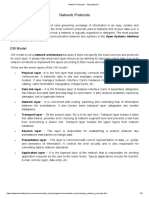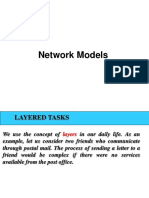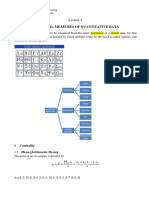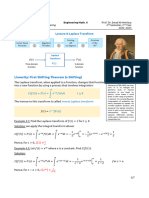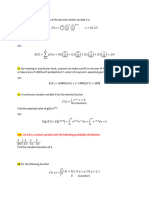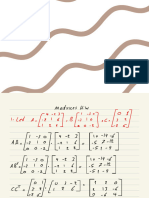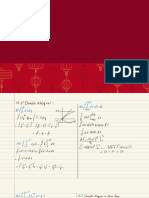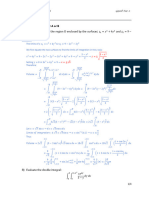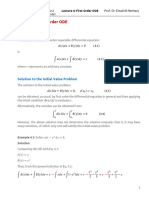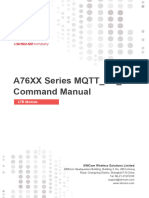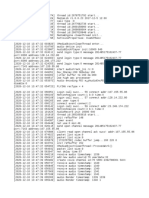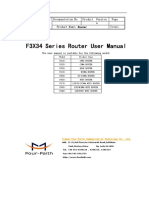0% found this document useful (0 votes)
23 views7 pagesLecture 1
The document discusses network protocols and the OSI reference model. It explains that network protocols define the format and order of messages exchanged between communicating entities to transfer data. The OSI model organizes network communication across 7 layers - physical, data link, network, transport, session, presentation, and application - with each layer providing services to the layer above it and communicating with the same layer on other devices. The document provides details on the responsibilities and examples of protocols for each of the 7 layers of the OSI model.
Uploaded by
owronrawan74Copyright
© © All Rights Reserved
We take content rights seriously. If you suspect this is your content, claim it here.
Available Formats
Download as PDF, TXT or read online on Scribd
0% found this document useful (0 votes)
23 views7 pagesLecture 1
The document discusses network protocols and the OSI reference model. It explains that network protocols define the format and order of messages exchanged between communicating entities to transfer data. The OSI model organizes network communication across 7 layers - physical, data link, network, transport, session, presentation, and application - with each layer providing services to the layer above it and communicating with the same layer on other devices. The document provides details on the responsibilities and examples of protocols for each of the 7 layers of the OSI model.
Uploaded by
owronrawan74Copyright
© © All Rights Reserved
We take content rights seriously. If you suspect this is your content, claim it here.
Available Formats
Download as PDF, TXT or read online on Scribd
/ 7












